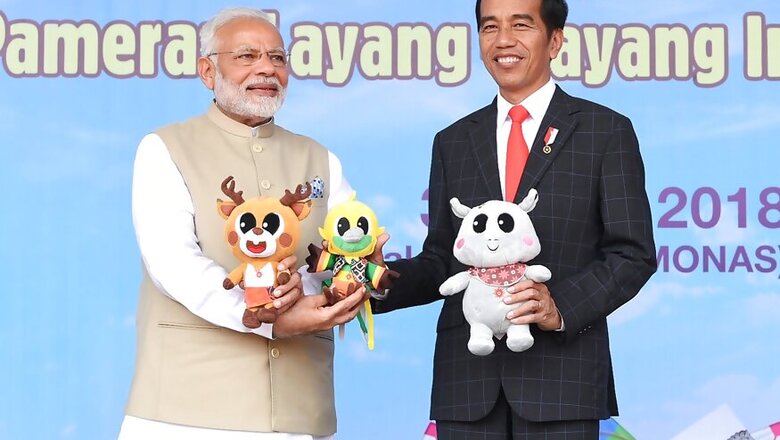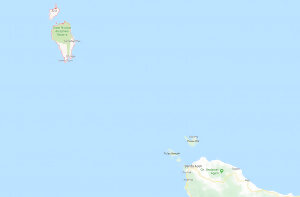
views
New Delhi: India and Indonesia adopted the “Shared Vision on Maritime Cooperation in the Indo-Pacific region”. The announcement was made during the joint statement by Prime Minister Narendra Modi and Indonesian President Joko Widodo early on Wednesday. The shared vision also marks the first such move on India’s part with any ASEAN country.
Both countries acknowledged the need to maintain maritime safety and security for peace, stability and sustainable economic growth and development in the maritime waters of the Indo-Pacific region as enshrined by United Nations Convention on the Law of the Sea (UNCLOS) and relevant international laws.
The statement can be seen in the light of the concerns shared by both nations over China’s claim on South China Sea. While India and Indonesia do not have a direct part to play in the dispute, both countries are well aware of the looming threat of China not adhering to international laws in resolving the claim.
The vision document said that both countries recognised the importance of the ‘Blue Economy’ as a driver of inclusive and sustainable economic growth and development in the region.
Indonesia’s renewed interests in maritime security and prowess, despite China’s aspirations and ambitions, work well for India. Other than access to port infrastructure development and freedom of navigation, stronger relations with Indonesia would make India more inclusive in the efforts to ensure regional security and economic development, considering how untapped Indonesia’s maritime might is.

The leaders also reiterated the importance to address the emerging maritime security concerns in the Indo-Pacific region. India emphasised on the convergence between its own policies, including Act East and Security and Growth for all in the Region (SAGAR) with Indonesia’s Global Maritime Fulcrum Vision (GMF). Launched in 2014, GMF aims to place Indonesia as an active player in determining the future of the Pacific and Indian Ocean Region. The United States of America supports the GMF, thus making it more relevant, if not less, in the global corridor.
Delimitation of Maritime Boundaries
The two leaders also agreed to mutually acceptable solutions on the delimitation of maritime boundaries “should be based on the principles of international law including the 1982 United Nations Convention on the Law of the Sea.” The vision document does not state the conclusion that both sides have agreed upon but it will strengthen efforts to against illegal poaching, fishing and transhipment.
The delimitation of shared maritime boundaries was something that was also discussed during the visit of Foreign Ministry’s director general for legal affairs and treaties, Damos Agusman.
India and Indonesia had an agreement in 1974 over their continental shelf. The treaty was revised in 1977 to include the Andaman Sea. The continental shelf includes rights of a nation over non-living resources and activities, like drilling, installing structures.
Things however changed when, in 1982, the United Nations brought in the Exclusive Economic Zone (EEZ) under its UNCLOS, which included both living and non-living resources. The treaty between India and Indonesia, however, remained as it was, excluding the EEZ.
As per UNCLOS, in the EEZ, the coastal state has “sovereign rights for the purpose of exploring and exploiting, conserving and managing the natural resources, whether living or non-living, of the waters superjacent to the seabed and of the seabed and its subsoil, and with regard to other activities for the economic exploitation and exploration of the zone, such as the production of energy from the water, currents and winds.”
The UNCLOS also limits the continental shelf and EEZ to 200 nautical miles. The continental shelf can be extended to 350 nautical miles, measured from the baseline points of both nations.
Coming back to India-Indonesia and the delimitation, the distance between Indira Point in Andaman & Nicobar Islands and Banda Aceh in Indonesia is just about 80 nautical miles, thus making the two nations engage in bilateral talks to resolve the issue.
While the process of delimitation would take time but the inclusion of the delimitation in the shared vision only furthers the resolve of both countries to emerge as important figures in the Indo-Pacific region and to resolve any dispute amicably.
















Comments
0 comment